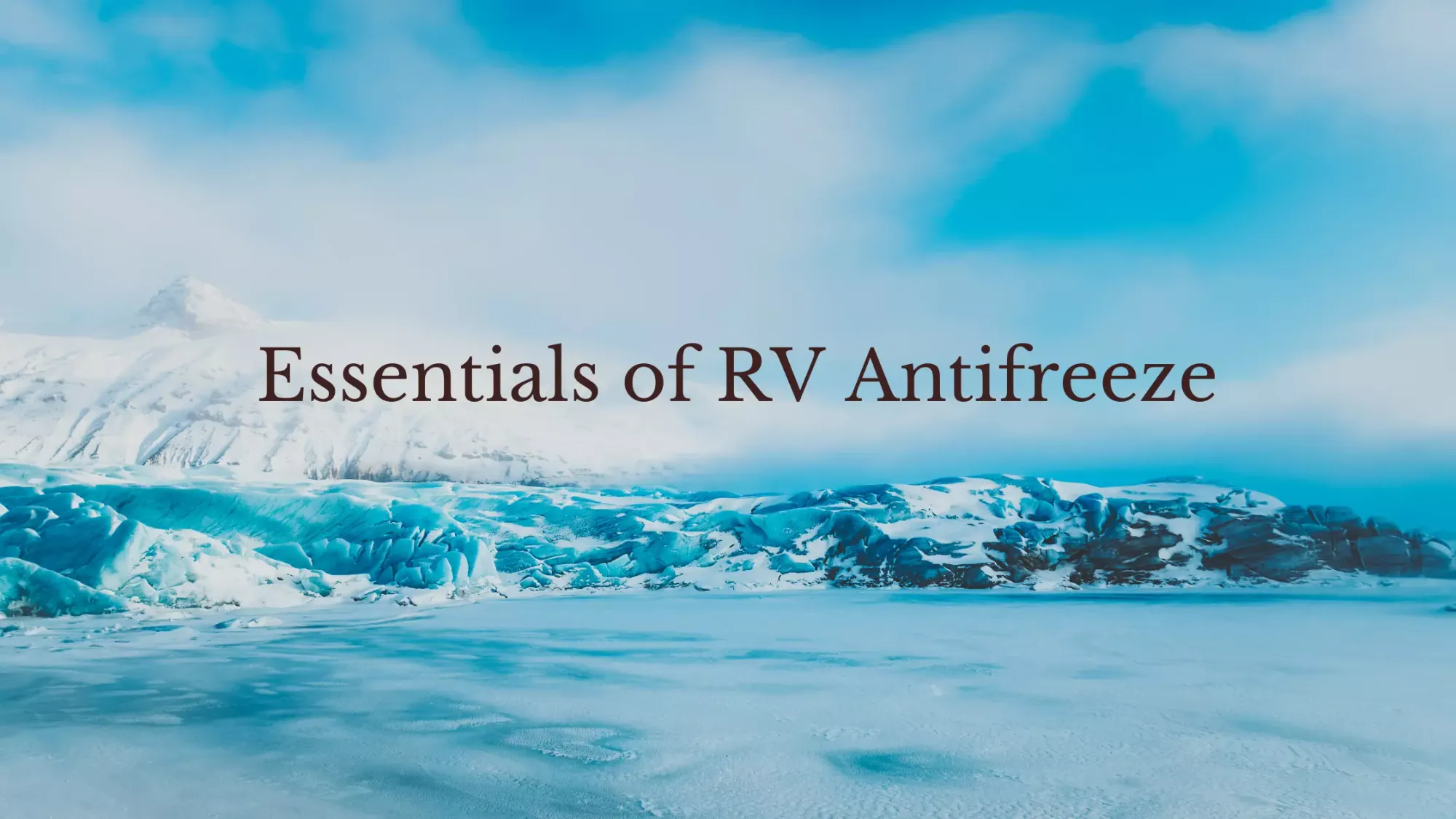Essentials of RV Antifreeze

Greetings, fellow RV and camper enthusiasts! As the seasons transition and temperatures begin to plummet, the topic of RV antifreeze becomes increasingly important. Whether you're a seasoned traveler or a newbie just beginning your journey, understanding the practical aspects of RV antifreeze is crucial to ensuring your home-on-wheels remains in tip-top condition.
What is RV Antifreeze?
RV antifreeze, distinct from the antifreeze used in car radiators, is specially designed to protect your RV or camper's water system from freezing temperatures. This non-toxic, pink-hued fluid can be safely run through pipes, tanks, and faucets to prevent them from cracking or bursting when ice forms.
Why is it Essential for Your Camper or RV?
Water expands when it freezes, and this expansion can exert considerable pressure on the confines of your RV's plumbing. If left unchecked, this can lead to extensive damage, costly repairs, and even the potential ruin of your cherished RV or camper. Using RV antifreeze is an affordable and straightforward preventive measure.
Types of RV Antifreeze
There are primarily two types of RV antifreeze:
- Propylene Glycol-Based: This is the most common type, known for its safety and non-toxicity. It's safe for all RV plumbing and is often used in food processing.
- Ethanol-Based: While also non-toxic, ethanol-based antifreezes can dry out rubber seals and gaskets over time. It's a cheaper option but requires more diligence in ensuring it doesn't cause long-term damage.
Practical Tips for Using RV Antifreeze
Drain the System First: Before introducing antifreeze, ensure all water is drained from your RV or camper's system. This includes emptying out the fresh water tank, water heater, and both the gray and black water tanks.
Bypass the Water Heater: Most RVs come equipped with a water heater bypass kit. Utilize this feature to save on the amount of antifreeze you'll need and to prevent unnecessary filling of the water heater.
Use a Hand Pump: If you're introducing antifreeze manually, a hand pump can be a lifesaver. Attach it to the city water fill and pump antifreeze into the system, ensuring all faucets and outlets are open until you see the telltale pink fluid flowing out.
Don't Dilute: Ensure the antifreeze isn't mixed with remaining water in the system. Dilution reduces its effectiveness.
Springtime Flushing
Once the threat of freezing temperatures has passed and you're prepping your RV or camper for the warmer months, you'll need to flush the antifreeze from the system.
- Full System Flush: Using fresh water, flush your system until the water runs clear and is free from any pink hue.
- Check for Residue: Some antifreezes can leave a slightly sticky residue. If this is the case, a mixture of baking soda and water can be used to clean out the system.
Storage Tips
If you've bought antifreeze in bulk, or simply have some leftover, store it in a cool, dry place away from direct sunlight. Ensure the container is sealed tightly to prevent evaporation and contamination.
Frequently Asked Questions (FAQs) about RV and Camper Antifreeze
Q: How much RV antifreeze do I need & how much RV antifreeze should I put in holding tanks?
The amount of RV antifreeze you'll need varies based on the size and layout of your RV or camper's plumbing system. On average, most RVs will require between 2 to 3 gallons for the entire system. For holding tanks, you don't need to fill them entirely with antifreeze. Instead, pour about a quart (roughly one liter) into each holding tank to ensure the valves and seals are protected.
Q: How do I get antifreeze into RV lines?
The most effective method to introduce antifreeze into your RV lines is by using a hand pump or a 12V water pump. Here's a step-by-step guide:
- Drain all the water from your system.
- Close all drains and faucets.
- Bypass your water heater to avoid wasting antifreeze.
- Connect a hand pump to your RV's city water fill, or if you have an internal system, use the 12V pump.
- Open the faucets, one at a time, starting with the closest to the pump, until you see the pink antifreeze flowing out. Don't forget both the hot and cold lines!
- Repeat for all faucets, including the outdoor shower if your RV has one.
Q: How much RV antifreeze should I put in the toilet?
To protect the toilet and its seals, pour about a pint (half a liter) of RV antifreeze into the bowl. This will ensure the toilet's seals and valves are safeguarded against freezing temperatures.
Q: How do I dispose of RV antifreeze?
Disposing of RV antifreeze responsibly is crucial. Here's what you should do:
- Never pour antifreeze down storm drains, septic systems, or onto the ground. This can contaminate water sources and harm the environment.
- Collect used antifreeze in a clean, leak-proof container.
- Check with local waste disposal facilities or recycling centers. Many places have specific locations where you can drop off used antifreeze for proper disposal or recycling.
- Consider recycling options. Some service stations or automotive shops have recycling services for antifreeze.
- If in doubt, consult your local regulations or environmental agency for guidance.
Final Thoughts
Ensuring your RV or camper is winter-ready is a responsibility that shouldn't be taken lightly. The joy of the open road, the freedom of travel, and the memories made are invaluable. Protect your investment and peace of mind by understanding and using RV antifreeze correctly. Safe travels and happy camping!